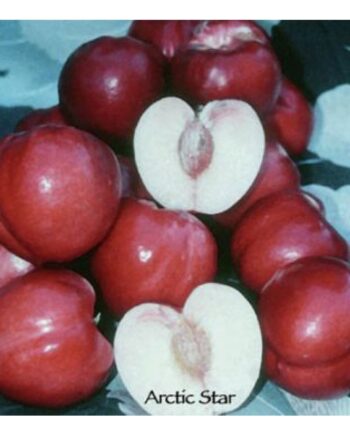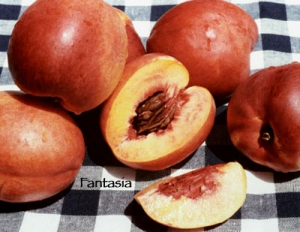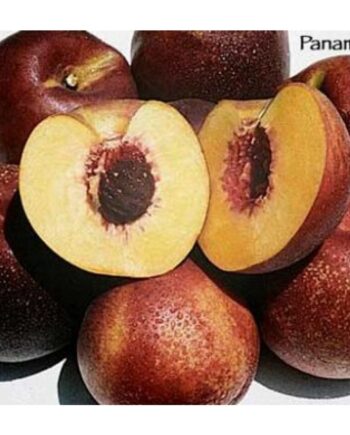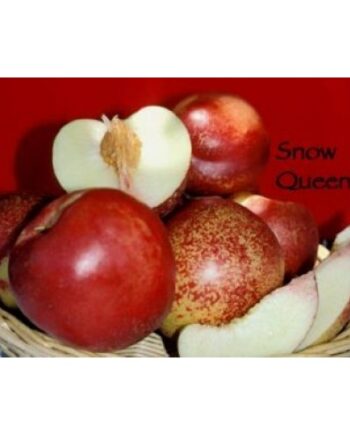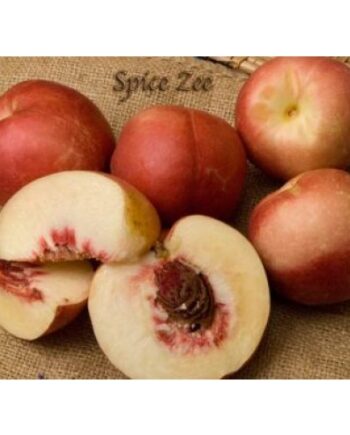Nectarine Trees
Showing all 6 results
-
Arctic Star White Nectarine Tree
Prunus persica var. nucipersica The Arctic Star White Nectarine is a heavy producing tree and incredibly delicious. The fruits have a white flesh that is very sweet and juicy. A great low chill variety for mild Winter climates. The tree blossoms with bea...Select options This product has multiple variants. The options may be chosen on the product page -
Fantasia Nectarine Tree
Prunus persica var. nucipersica The Fantasia Nectarine is a very delicious, sweet, tangy, and juicy yellow flesh nectarine. The skin is smooth, yellow with a red blush. Large size freestone firm fruit. Trees produce young and heavy in warm Winter climate...Select options This product has multiple variants. The options may be chosen on the product page -
Panamint Nectarine Tree
Prunus persica var. nucipersica A great quality nectarine with red skin and yellow flesh. Great tasting with a balanced sugar and sour flavor. An easy to grow freestone nectarine tree. A popular variety for mild Winter climates. The fruits ripen in the l...Select options This product has multiple variants. The options may be chosen on the product page -
Sauzee King Nectarine Tree
A very unique donut-shape, flat nectarine. An amazing white flesh fruit that has very sweet, juicy, and tasty flesh. The Sauzee King Nectarine has smooth skin that is reddish in color over bits of yellow. Harvest fruit in ...Select options This product has multiple variants. The options may be chosen on the product page -
Snow Queen Nectarine Tree
Prunus persica var. nucipersica A sweet and juicy, white flesh freestone nectarine. It is a very delicious variety. Red color, smooth texture skin with yellow spots. Beautiful pink Spring blossoms, and early summer fruits. Low Chill. 250 Hours. Self-frui...Select options This product has multiple variants. The options may be chosen on the product page -
Spice Zee Nectaplum
A nectarine dominant hybrid with plum. The Spice Zee Nectaplum has surprising pleasing flavor. A somewhat acidic, spicy sweet taste and very juicy. An attractive upright tree with a great flush of Spring time blossoms and ...Select options This product has multiple variants. The options may be chosen on the product page
Nectarine trees are deciduous that have beautiful pink spring blossoms. Water once a week once they leaf out and flower in the Spring. Nectarines are ripe and ready for harvest in the Summer. Nectarine trees have long green leaves and dark brown branches. Nectarine fruit is oblong shapes with smooth reddish skin.
Add a touch of beauty and deliciousness to your garden. Look no further than Nectarine Trees for sale! These fruit-bearing trees are a perfect addition to any home garden, offering both aesthetic appeal and a bountiful harvest of juicy and flavorful nectarines.
Nectarine trees are known for their stunning blossoms in the spring, filling the air with a sweet fragrance. With their glossy green leaves, they create a vibrant and lush environment in your backyard. The fruit itself is a true delight, with its firm yet tender flesh and mouth-watering taste. Whether eaten fresh, used in baking, or made into preserves, nectarines are a versatile fruit that will be enjoyed by the whole family.
Purchasing your nectarine tree is a smart investment. Not only will it provide you with a sustainable source of delicious fruit, but it will also enhance the visual appeal of your outdoor space. Imagine the joy of walking out to your garden and picking ripe, sun-kissed nectarines straight from the tree. It doesn’t get fresher than that!
So, why wait? Take this opportunity to jump-start your garden and acquire your nectarine tree. Create a beautiful and fruitful oasis right in your backyard, and enjoy the taste of summer all year round.
Plant Care Information
How To Water - Frequency and Duration to Irrigate
Irrigation Water Quantity and frequency based on tree maturity – Fully saturate the soil with water once per week during the early spring. Increase to twice per week as the weather warms. Water 3 times per week or more during hot summers. Provide about 5 gallons of water for a 5 gallons size plant, 15 gallons of water for a #15 size container plant, and 25 gallons for a #25 depending on soil type. Sandy soils can hold less water required more frequently, while clay soils can hold more water and require less frequent irrigation. Young trees with less developed roots require water more frequently while mature plants with developed roots will require less frequent watering.
Fertilizer and Plant Nutrition
Fertilize your tree every 3-4 months. Use a complete balance fertilizer with a 1-1-1 or 2-1-1 NPK ratio during the Spring and Summer growing season, and a formula with more phosphorus and potassium before the tree flowers to improve fruit production and development.
Winter Pruning and Summer Thinning
Prune your tree to allow light into its center for proper growth and fruit production.
Prune fruit trees in the Winter to maintain size and shape to prepare for Spring growth. Thin the tree in the Summer, and remove excessive fruits. Remove any dry twigs and branches. Cut off any new growth below the graft or very low in the tree, this will direct the plant’s energy to its main branches. Thin your trees during the Spring and Summer seasons to ensure the plant’s energy is directed as desired. Harvest ripe fruit to prevent undesired pests.
Harvesting and Pest Management
The basics of integrated pest management is cleanliness and the use of a combination of methods. This means we use an organic pesticide when the pest population reaches a threshold that requires action. Horticultural oils such as Neem oil is an organic pesticide that controls tiny, soft bodied insects. Use organic Bordeaux and Liqui-cop to manage fungus causing diseases such as powdery mildew, rust, and leaf-curls.
Keep a clean environment, free of weeds and dropped fruit that host insects or attract animals. Harvest when fruit reaches size and store indoors. Use repellants and bird netting to protect your harvest from other animals.
Sun Exposure: Full Sun
Deciduous trees need about 5 hours of direct sunlight for proper growth and fruit production.
Sunlight Sensitive plants like Cherries, Persimmons, and Plums can burn in hot climates if they lack water. Use afternoon shade to prevent this damage. A lack of light will stunt growth; balance is key.


